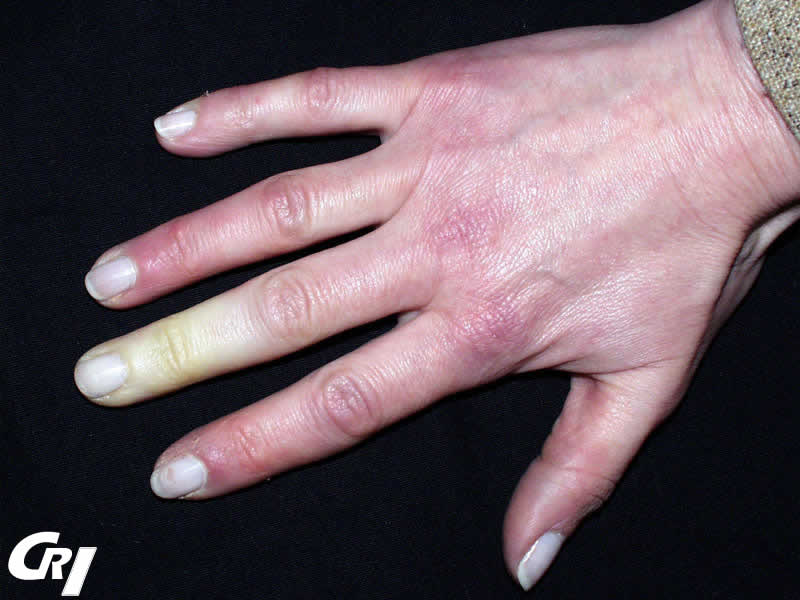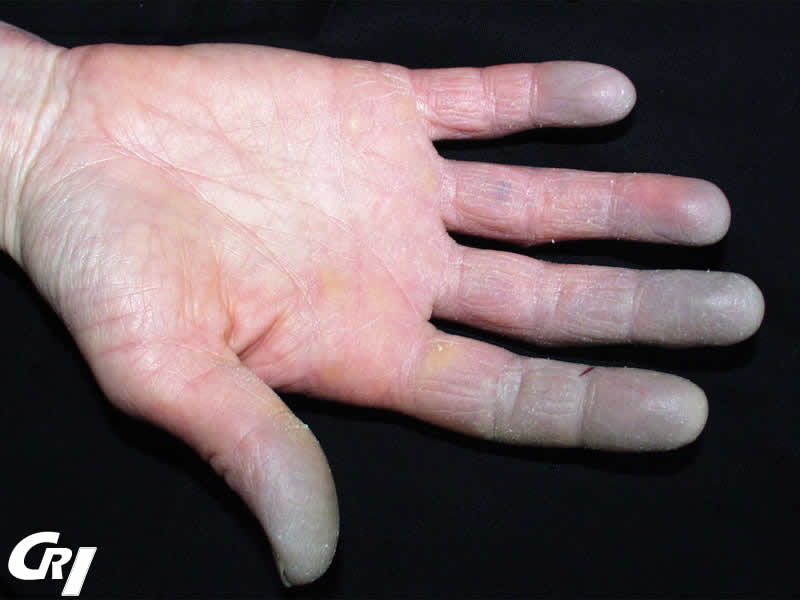Symptoms
What are the signs and symptoms of Raynaud’s phenomenon?
Signs and symptoms of Raynaud’s phenomenon?
People who suffer from Raynaud’s phenomenon see a rapid change in the colour of their extremities; this most often occurs in the fingers, but it can also affect other parts of the body such as the toes, and, more rarely, the ears and nose.
Raynaud’s phenomenon typically occurs in several stages:
- In the first stage, the skin of the affected body part becomes white and cold to the touch. This is called the “white phase.”
- The affected area may then turn blue and then red (blue and red phase). Raynaud’s phenomenon can also present as only a blue phase, without passing by the white phase, but this is rare.


Raynaud’s phenomenon can be painful, but it does not cause pain all the time or in everyone affected. Some people will instead experience a temporary tingling or loss of sensation in the affected area. Between episodes or attacks, the affected body part returns to normal.